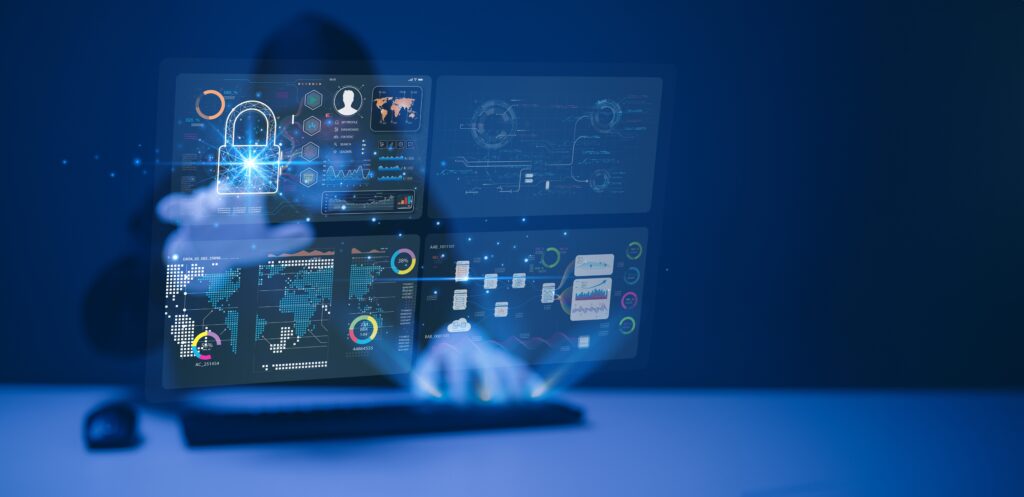Cyber Resilience as a Competitive Advantage

Introduction
In today’s hyperconnected world, cyber resilience is no longer just a technical concern but a strategic imperative. As digital systems become central to business operations, the ability to withstand, recover from, and adapt to cyber disruptions defines industry leaders. At Altum Strategy Group, we champion a forward-thinking approach to cyber resilience, positioning it not merely as a security function but as a core business differentiator.
Core Value Proposition of Cyber Resilience
Cyber resilience is more than defense—it is continuity, agility, and trust. Organizations that embed resilience into their digital infrastructure maintain uptime, protect customer experiences, and recover faster than competitors. This resilience translates directly into business value: increased customer satisfaction, stronger brand reputation, and greater operational efficiency.
“Resiliency is a business benefit. Increased resiliency means increased uptime, which means increased customer satisfaction—which drives more interactions, sales, and growth.”
— Andy Pojuner, Managing Director, Technology, Data and Intelligence, Altum Strategy Group
Business Alignment
We position cyber resilience as a catalyst for innovation. Rather than viewing security investments as sunk costs, we help clients recognize them as enablers of agility and transformation. This shift in mindset—from compliance-driven security to resilience-focused strategy—empowers organizations to embrace digital change with confidence.
One client, for example, launched a new platform without entirely building or testing their disaster recovery (DR) environment. When a major connectivity outage occurred, the untested backup systems failed. This incident became a turning point: the organization created a dedicated resiliency role and began building global capabilities to ensure business continuity. These efforts extended beyond IT to include critical supply chains—such as fuel for data centers and backup generators—ensuring operations could continue even during regional crises like the Texas ice storm.
Technology Focus
“You can build in processes where you deploy code automatically. That’s a form of resiliency—if done well, it also supports cybersecurity by enabling code scanning and even on-the-fly remediation.”
— Andy Pojuner, Managing Director, Technology, Data and Intelligence, Altum Strategy Group
Our approach to resilience is deeply rooted in automation and modern infrastructure practices. We enable rapid, repeatable deployment of secure environments by implementing infrastructure-as-code (IaC) using tools like Terraform and Ansible. This reduces human error, accelerates recovery, and ensures consistency across systems. This also includes configuration as code (CaC), where the configuration of a solution, in most cases a SaaS based solution, can be reconfigured in the event of an issue. This also enables the configuration to be monitored effectively and managed through pipelines.
We deploy automated monitoring tools to detect real-time configuration changes and remediation systems to correct drift without manual intervention. This enhances resilience and strengthens cybersecurity by ensuring systems remain in a known-good state.
Altum’s Cyber Resilience Framework
Our resilience strategy is holistic. It spans technology, process, and people. We use automation to ensure that systems can be restored quickly and securely. Our scenario planning prepares organizations for a wide range of disruptions. Our training programs ensure that internal teams can sustain and evolve resilience capabilities over time.
This comprehensive approach to security thinking moves beyond prevention to embrace detection, response, and recovery as equally vital components of resilience.
Our engagements typically follow a structured path that’s tailored to each client’s needs:
- Assessment Phase – Comprehensively evaluate existing systems, business processes, and recovery capabilities.
- Infrastructure Transformation – Implement IaC and CaC for rapid, consistent environment deployment.
- Template Development – Create reusable infrastructure templates to accelerate recovery.
- Monitoring & Remediation – Deploy automated systems to detect and correct configuration drift.
- Scenario Planning – Design and test recovery playbooks for various threat scenarios, including cyberattacks and natural disasters.
- Playbook Automation – Develop guided recovery processes for consistent execution during incidents.
- Team Enablement – Train client teams to maintain and evolve resilience capabilities.
Industry Perspective
The wider industry is aligning with what we have long promoted. According to Gartner, by 2025, 40% of corporate boards will have dedicated cybersecurity committees. The World Economic Forum ranks cyber resilience among the top five global business risks. These trends reflect a growing recognition that resilience is not optional but essential.
Organizations adopting infrastructure-as-code recover from incidents 21% faster than traditional methods. This speed can mean the difference between a minor disruption and a major crisis.
Case Study Data and Client Insights
Our impact is measurable across projects:
- Recovery Time Improvement: Reduced from 36 to 4.2 hours (88% reduction).
- Deployment Metrics: Configuration deployment and approval time cut from 2 days to 17 minutes using IaC and CaC deployment pipelines.
- Security Incident Impact: Business impact reduced by 76% by automating the BISO manual reporting.
- Cost Efficiency: $450,000 in annual savings from reduced downtime and manual recovery.
- Audit Findings: Compliance exceptions dropped from 23 to 3 in one year by allowing teams to share IaC code for approved SaaS and Cloud-hosted solutions.
- Staff Productivity: Time spent on recovery tasks fell from 35% to 8%, freeing teams to focus on innovation.
Our clients often realize the value of resilience only after a crisis. One client had not tested its backup systems before a significant outage. The incident exposed critical gaps but also catalyzed a transformation. The organization improved its IT resilience and built business continuity plans for logistics, supply chains, and customer service.
In another case, a client was able to maintain operations during a regional fuel shortage because we had helped them diversify their supply chain and establish out-of-state sourcing relationships. While competitors went offline, they remained operational.
Conclusion
Cyber resilience is not just a technical safeguard but a strategic advantage. Organizations that invest in resilience are better positioned to innovate, grow, and lead. By partnering with Altum Strategy Group, businesses can transform their approach to cybersecurity, turning potential vulnerabilities into sources of strength.
Resilience is the new competitive edge in a world where disruption is inevitable.
- Date June 5, 2025
- Tags Insights, Intelligence, Data & Technology Case Study, Intelligence, Data & Technology Insights

